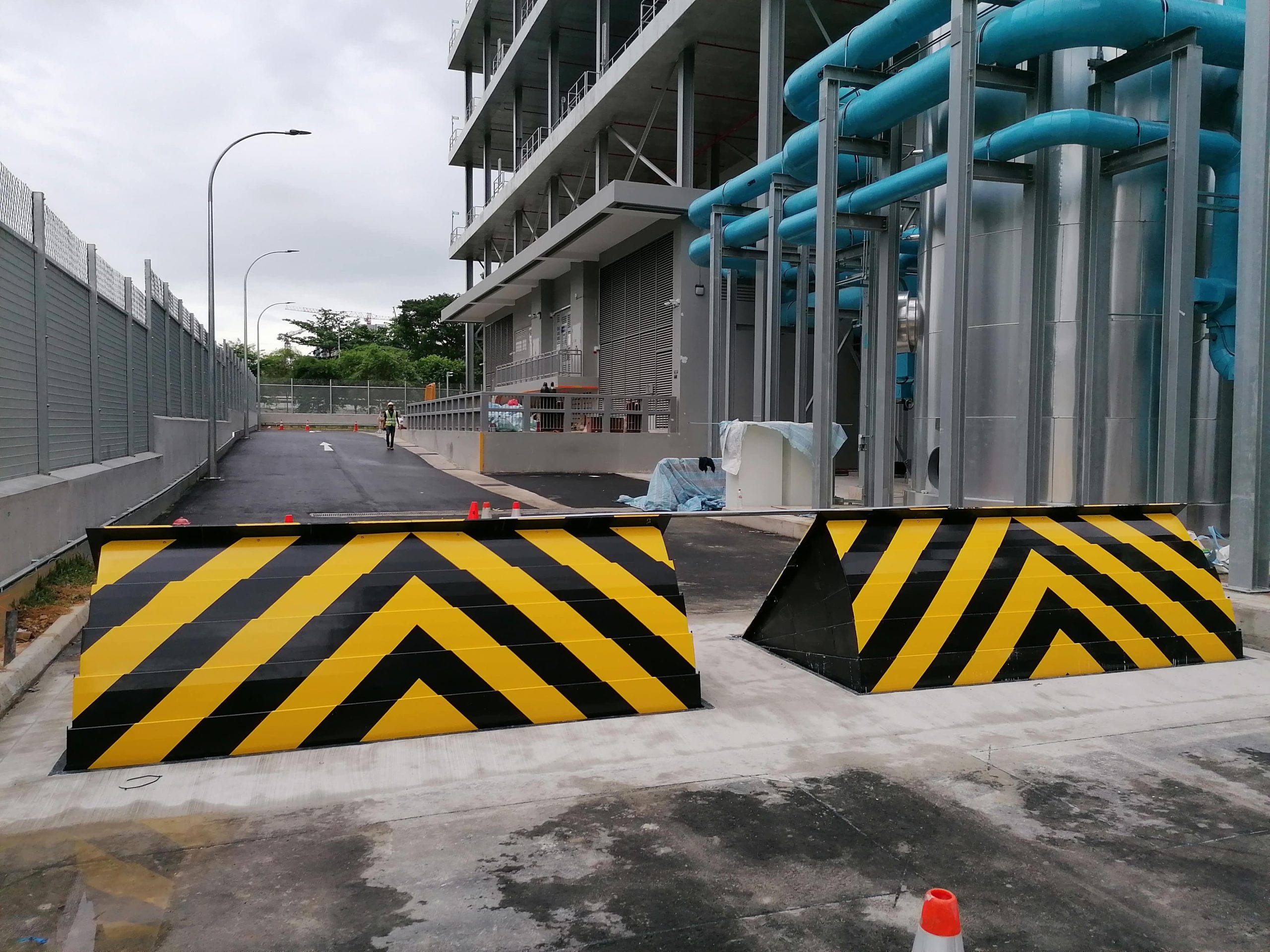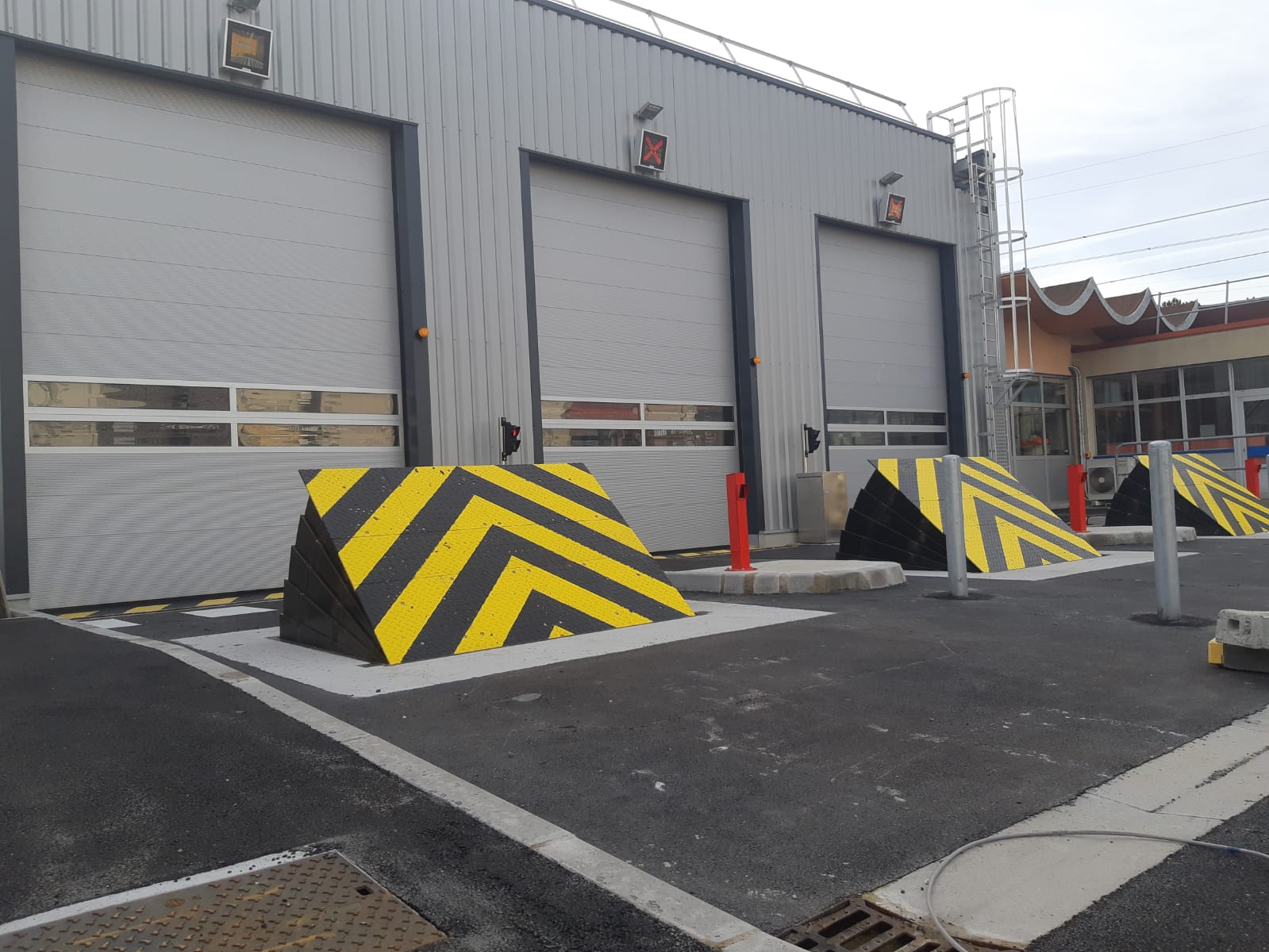
Protect Critical Infrastructure: The Vital Role of Road Blockers in Oil & Gas and Military Facilities
Critical infrastructure, such as oil & gas facilities and military bases, are high-risk targets. They require robust security measures to protect against potential threats.
One such measure is the use of road blockers. These are designed to prevent unauthorized vehicle access, serving as a physical barrier against vehicular attacks and accidental breaches.

But how can these road blockers be effectively integrated into urban planning? How can they enhance safety without disrupting traffic flow? And what role do they play in risk management and emergency preparedness?
These are some of the questions we’ll explore in this article. We’ll delve into the world of road blockers, from Hostile Vehicle Mitigation (HVM) to crash-rated solutions.
Whether you’re an urban planner, a security professional, or a facility manager, you’ll find valuable insights and practical advice in this guide. So, let’s dive in and discover the vital role of road blockers in protecting our critical infrastructure.
Understanding Road Blockers and Their Importance
Road blockers are a type of physical security measure. They’re designed to stop vehicles from gaining unauthorized access to a site.
They come in various forms, from rising bollards to wedge barriers. But their primary function remains the same: to prevent vehicular attacks and accidental breaches.
In the context of critical infrastructure, road blockers are invaluable. They provide a high level of protection for facilities that are often high-risk targets, such as oil & gas installations and military bases.
By effectively controlling vehicle access, road blockers contribute to the overall resilience of these facilities. They’re a key component in a layered security approach, complementing other defensive measures like CCTV, access control, and alarm systems.
The Specific Needs of Oil & Gas and Military Facilities
Oil & gas facilities and military bases have unique security needs. These sites are often high-risk targets, making robust security measures a necessity.
Road blockers play a crucial role in this context. They provide a physical barrier that can stop vehicles of various sizes and speeds, effectively preventing unauthorized access.
In addition, road blockers can be operated manually or automatically, depending on the security needs of the facility. This flexibility makes them a versatile tool in the security arsenal of these critical infrastructures.
Types of Road Blockers: From HVM to Crash-Rated Solutions
Road blockers come in various types, each designed to meet specific security needs. One of the most common types is the Hostile Vehicle Mitigation (HVM) road blocker.
HVM road blockers are designed to stop vehicles of various sizes and speeds. They provide a high level of protection, making them ideal for high-risk sites like oil & gas facilities and military bases.
Another type of road blocker is the crash-rated road blocker. These blockers are tested against industry standards to withstand specific impact energies. They are designed to stop vehicles even when they are traveling at high speeds.
Here are some key features of these road blockers:
- HVM road blockers: Designed to stop vehicles of various sizes and speeds.
- Crash-rated road blockers: Tested to withstand specific impact energies.

Integrating Road Blockers into Urban Planning
Integrating road blockers into urban planning is a strategic move. It enhances safety without disrupting traffic flow.
Urban planners must consider the balance between security and accessibility. This is crucial when designing traffic flow patterns around critical infrastructure.
Road blockers can be recessed into the ground or surface-mounted. The choice depends on site conditions and security needs.
They can also be equipped with warning lights, sound alarms, and signage. These features guide drivers and enhance overall safety.
Risk Management and Emergency Preparedness with Road Blockers
Risk management strategies for critical infrastructure must consider vehicular threats. Road blockers play a vital role in mitigating such risks.
Emergency preparedness plans should include the deployment and operation of road blockers. They can be deployed rapidly in response to a security threat or emergency situation.
Road blockers are an integral part of a layered security approach. They complement other defensive measures such as CCTV, access control, and alarm systems.
The selection of road blockers should be based on a thorough threat assessment and site analysis. This ensures the most effective and appropriate security measures are in place.
Operational Considerations for Road Blockers
Road blockers can be operated manually or automatically, depending on the security needs of the facility. Automatic systems can be integrated with other security systems for seamless operation.
Training for personnel on the operation and emergency procedures of road blockers is essential. This ensures the system is used effectively and safely.
Road blockers can be synchronized with traffic lights and other road infrastructure. This helps maintain efficient traffic flow while enhancing security.
Maintenance and testing of road blockers are crucial for ensuring their effectiveness. Regular checks help identify and address any potential issues promptly.
Customization and Aesthetics in Road Blocker Design
Road blockers can be customized to fit the aesthetic and functional requirements of the urban environment. This includes the design, color, and finish of the blocker to blend with the surroundings.
They can be recessed into the ground or surface-mounted, depending on site conditions. This flexibility allows for seamless integration into various urban landscapes.
The visibility of road blockers can also serve as a psychological barrier. It reinforces the security posture of a site, deterring potential threats.
Maintenance, Testing, and Training for Road Blocker Systems
Proper maintenance and testing of road blockers are crucial for ensuring their effectiveness. Regular checks help identify potential issues early, ensuring the system remains operational at all times.
Training for personnel on the operation and emergency procedures of road blockers is also essential. This ensures that the system is used correctly and efficiently, maximizing its protective capabilities.
In essence, the longevity and effectiveness of road blockers depend on regular maintenance, rigorous testing, and comprehensive training.
Regulatory Compliance and Safety Standards
The installation of road blockers must comply with local regulations and safety codes. This ensures that they meet the necessary standards and do not pose a risk to public safety.
Moreover, compliance with safety standards is a key aspect of risk management. It helps to prevent accidents and ensures that the road blockers function as intended in emergency situations.
The Future of Road Blockers in Urban Security
The future of road blockers is promising, with advancements in technology paving the way. Integration with smart city systems is one such development, enhancing both security and traffic management.
As urban planners, staying informed about these developments is crucial. It allows us to leverage the latest best practices in road blocker technology, ensuring our urban environments remain safe and secure.
Conclusion: Balancing Security and Accessibility
In conclusion, road blockers play a vital role in protecting critical infrastructure. They offer a robust solution to manage traffic flow and deter potential threats, particularly in high-risk environments like oil & gas and military facilities.
However, it’s important to strike a balance between security and accessibility. While we need to protect our infrastructure, we must also ensure that our urban environments remain accessible and user-friendly.
Ultimately, the successful implementation of road blockers requires a collaborative approach. Urban planners, security experts, and engineers must work together to create a safe, secure, and efficient urban environment.